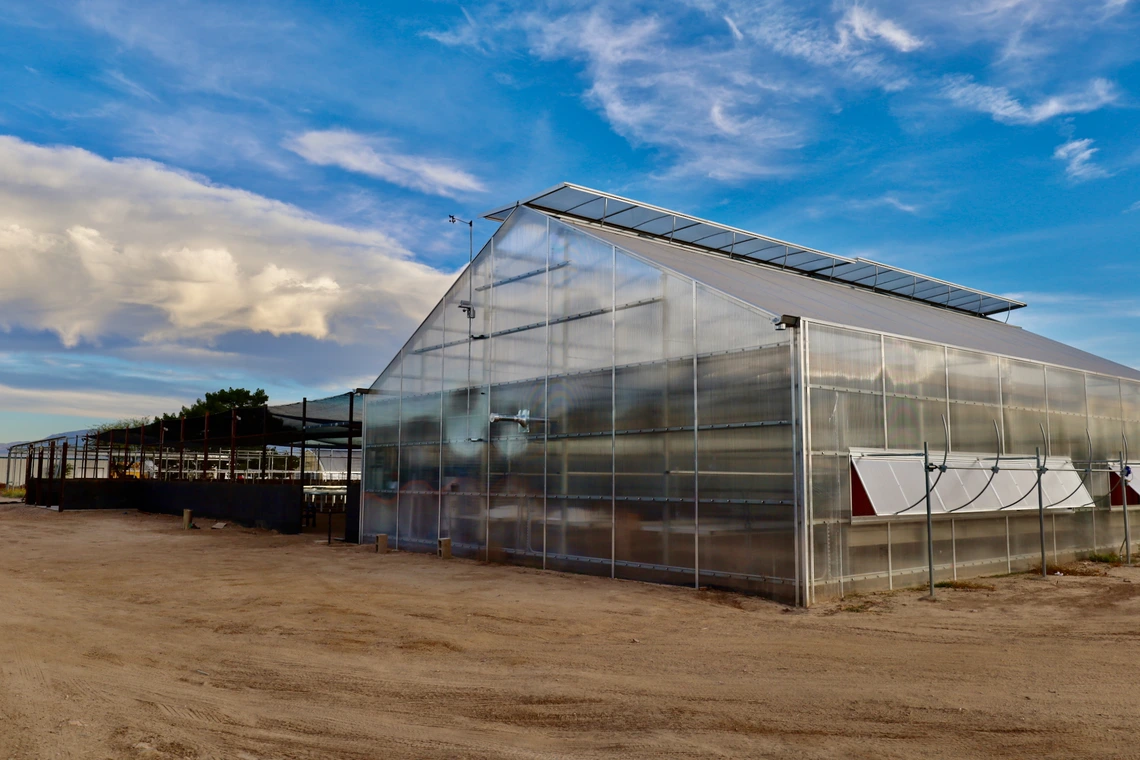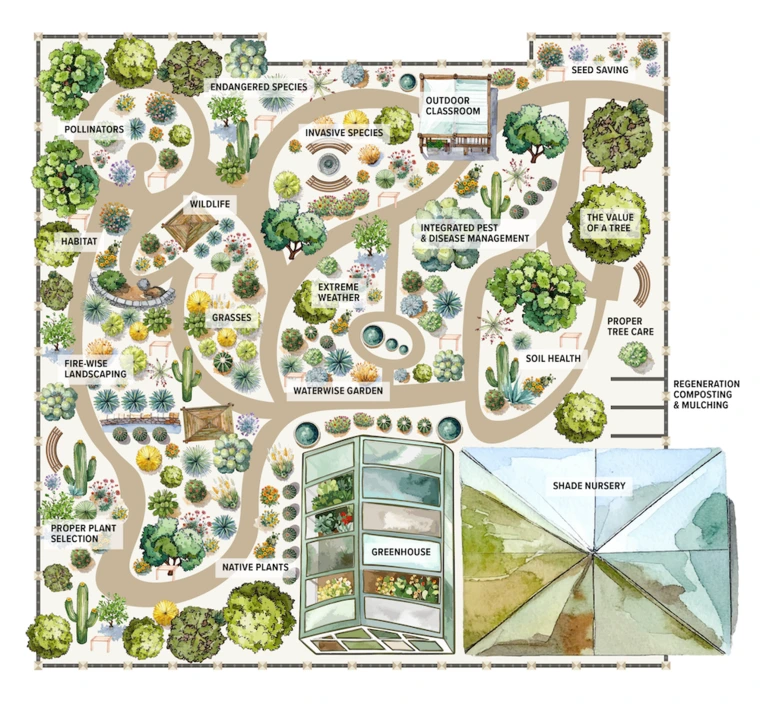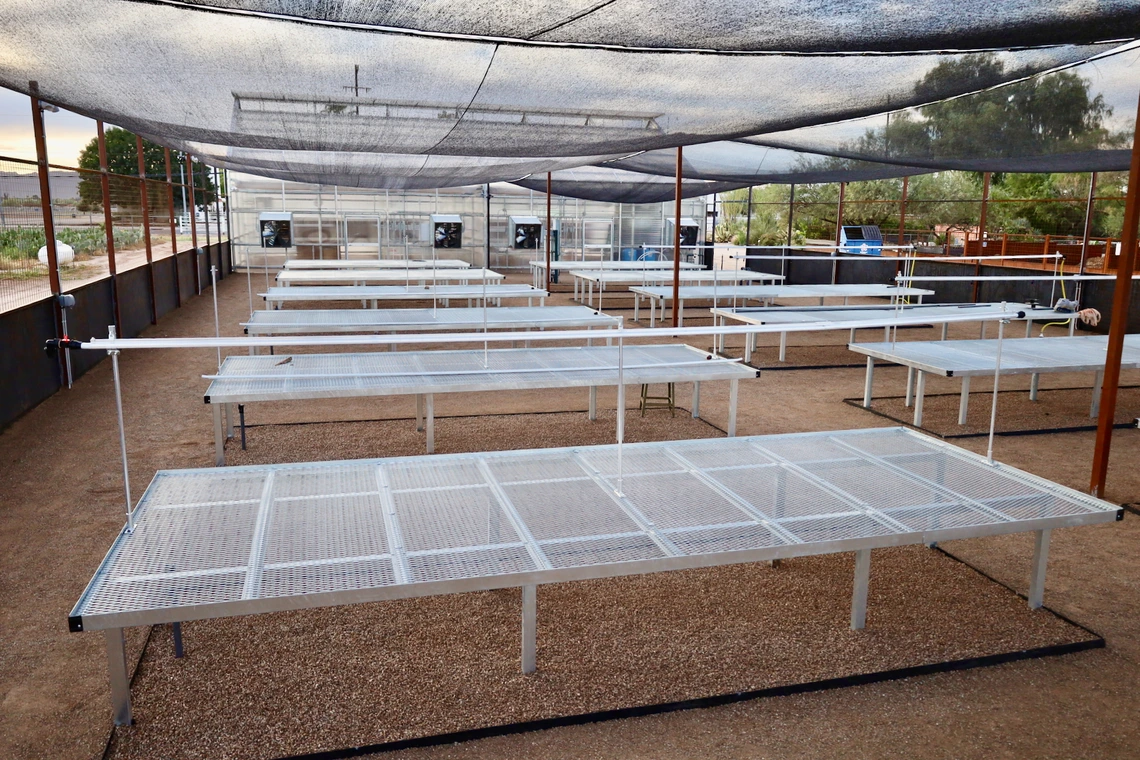Planned sustainable landscaping garden will teach how and what to grow in Arizona
A new greenhouse at the University of Arizona Campus Agricultural Center will be the centerpiece of the garden.

This new greenhouse was made possible by a donation from University of Arizona alum Curtis Jones. A ribbon cutting is scheduled for November 15 from 10 a.m. - noon at Pima County Cooperative Extension, 4210 N. Campbell Avenue.
Brad Poole, Cooperative Extension
A new greenhouse at University of Arizona will be the centerpiece of a planned demonstration garden that Cooperative Extension master gardeners will use to teach about sustainability.
“The goal is to be the premier education destination for sustainable landscaping,” said Celeste Gambill, Pima County Master Gardener Program manager.
Master Gardeners are highly trained volunteers who connect the public to gardening science. They will use the greenhouse at the Campus Agricultural Center to not only teach the public but to raise plants for sale to fund the program, which gets 60 percent of its revenue from two annual plant sales, Gambill said.
The greenhouse was made possible by a donation from Curtis Jones, who holds a master’s degree in plant science from U of A. Jones founded and later sold a successful seed packet company, Botanical Interests, and has supported other Extension programs, including funding an orchard at Tucson Village Farm.
The new greenhouse replaces a smaller, 30-year-old one with an irrigation system plagued by calcium deposits from hard water. The new one solves that problem with a reverse osmosis filtering system. The spent water from this system will be blended back into water that will be used to water the plants in the new garden, bringing water waste down to zero.

This conceptual drawing shows features University of Arizona Cooperative Extension hopes to include in a planned educational sustainable landscaping garden. The greenhouse and shade nursery were built using a donation, which serves as a seed donation for fundraising effort to build the garden.
Jessica Hill Gurlach, University of Arizona
Learning zones
The garden will include ADA-accessible paths, bilingual educational signs and will highlight practical, research-based techniques for thriving in arid climates. Demonstration zones will include:
- Pollinator and wildlife habitats
- Waterwise gardening and rainwater harvesting
- Native and desert-adapted plantings
- Composting, soil health and Firewise landscaping
- Green infrastructure and climate resilience practices
Each area is planned with educational signage and will be co-developed with local community partners. The garden also includes an outdoor classroom, active water harvesting and green career exploration zones, providing a unique space to inspire both homeowners and professionals.
The garden and greenhouse will help Master Gardeners guide the public toward a more sustainable view of landscaping, said Deb North, a 20-year veteran Master Gardener.
Master Gardeners have always been very responsive to what the community wants, teaching people how to grow what they’re used to, tomatoes and roses are examples, that might not be the best choices for the Sonoran Desert. This represents a subtle shift toward what the community needs instead of what it wants, North said.
New classes
“We're also changing the curriculum that we teach to more significantly align with what we're trying to design into this garden as well,” she said.
Those changes have already begun. Master Gardeners do free talks in more than a dozen Tucson-area libraries, three in Spanish. Every other month there is a Zoom talk devoted to a different invasive species, and every three months there is a talk about Firewise landscaping, which teaches homeowners what to grow in their yards to protect against wildfire.
The shift toward sustainability education is designed to help the public, many of whom come from other states and want to grow what they had back home, understand that the desert isn’t all prickly pears and saguaros, said Master Gardener Megan O’Neil.
“We're never going to be tropical, but we can show people that there are options that are better here. We don't blame people for wanting to grow what they know how to grow, we just need to show them that the world is changing, and we need to change with it,” O’Neil said.
More space
The new greenhouse also includes indoor and outdoor table space for public education, something the old one lacked, Gambill said.
“We looked at this donation and asked, ‘Where can it make the most impact, not only in terms of revenue for our program, which is primarily how we're funded, but also then having a space where we can safely welcome every member of the public in to do propagation classes, to do workshops, to have students come in,” she said.
Gambill also hopes to collaborate with a broad range of community partners while planning the new space.
“We want this to be a thoughtfully designed space meant for our entire community,” Gambill said.
The garden could help the Master Gardeners draw in younger gardeners, many of whom want more than just pretty flowers in their yards.
“Maybe things like milkweed and Gregg’s mistflower, which attract monarchs, plants that can be beneficial in more than one way. I think that's a shift we're seeing, multi-use plants,” O’Neil said.

This shaded workspace will allow the Cooperative Extension Master Gardener Program to teach plant propagation classes to dozens of people at once.
Brad Poole, Cooperative Extension
Looking ahead
The garden will bring Cooperative Extension into alignment with a changing climate, O’Neil said.
“I think the vast majority of people know that it’s time to move to sustainable gardening practices. You do not have to live in this climate for very long before you recognize, especially if you're a gardener, that you can't do things the way you used to do them. This climate demands that we adapt,” she said.

